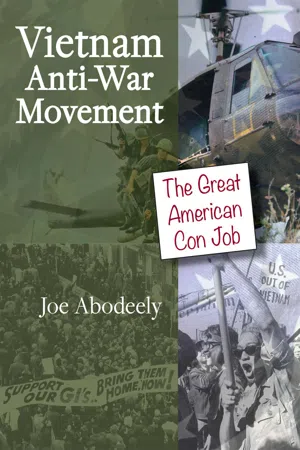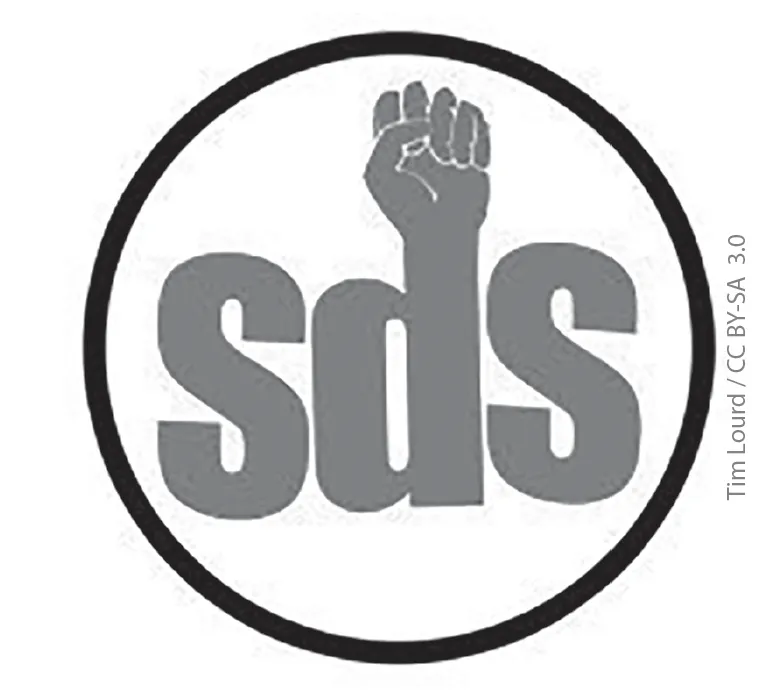
- English
- ePUB (mobile friendly)
- Available on iOS & Android
About This Book
***Winner: Dan Poynter Legacy Award***
***4 First Place Gold Global E-book Awards for Nonfiction Education, Military, History, and Cover Design.***
Why was and is the Vietnam War still so controversial? America recognized that the region was vulnerable. Communist expansion was a threat that violated the Southeast Asia Treaty Organization (SEATO) which included France and its protectorate-Vietnam.
Ho Chi Minh was an ardent Communist who led brutality against fellow Vietnamese people. He was a "hero" only to the Communists, their supporters, and the anti-war crowd.
The "anti-war movement" occurred at a time of the convergence of several emerging "movements"-Civil Rights and Black Power, Women's Liberation, Gay Rights, Chicano Power, Jews and Catholics against the war. The media and academia relished in the controversy as television quickly spread the carnage of war and the debates about it to a curious public. They all took a "principled stand" against this war-and defamed anyone involved or supporting it. So-called scholars perverted and misrepresented the war's history.
While anti-war protesters acted out, U.S. Soldiers, Marines, Sailors, Airmen, and Coastguardsmen served, fought, and died in Vietnam. Women also served as nurses and administrative personnel in Vietnam; some gave their lives, too. Vietnam veterans were treated as war criminals; were mocked; called baby killers; denied jobs; generally defamed and ostracized. Two-thirds of their age grouphad volunteered to serve as opposed to one-third who volunteered during WWII.
What follows is an exposé of the microcosms of the war at home and the war in Vietnam.
Frequently asked questions
Information
Who Was Against the Vietnam War and Why?
- May. Anti-Vietnam War protests in England and Australia
- June 11. (Born Lâm Văn Túc) was a Vietnamese Mahayana Buddhist monk who burned himself to death at a busy Saigon road intersection. Quảng Đức was protesting the persecution of Buddhists by the South Vietnamese Christian government led by Ngô Đình Diệm.

- September 21. War Resisters League starts first U.S. protest against Vietnam. War and “anti-Buddhist terrorism” by the U.S.-supported South Vietnamese regime with a demonstration at the U.S. Mission to the UN in New York City.
- October 9. WRL and other groups turn out 300 pickets against a speech by Madame Ngo Dinh Nhu at the Waldorf-Astoria in New York City.
- March. A conference at Yale plans demonstrations on May 4.
- April 25. The Internal Protector published a pledge of draft resistance by some of the organizers.
- May 2. Hundreds of students demonstrated on New York’s Times Square and from there went to the United Nations. Seven hundred marched in San Francisco. Smaller demonstrations took place in Boston, Madison, Wisconsin, and Seattle. These protests were organized by the Progressive Labor Party with help from the Young Socialist Alliance. The May 2nd Movement was the PLP’s youth affiliate.
- May 12. Twelve young men in New York publicly burned their draft cards to protest the war — the first such act of war resistance.
- Fall. Free Speech Movement at the University of California at Berkley defended the right of students to carry out political organizing on campus. The founder: Mario Savio.
- Early August. White and black activists gathered near Philadelphia, Mississippi, for the memorial service of three civil rights workers. Speakers bitterly spoke out against Johnson’s use of force in Vietnam, comparing it to violence used against blacks in Mississippi.
- December 19. First coordinated nationwide protests against the Vietnam War included demonstrations in New York City sponsored by War Resisters League, Fellowship of Reconciliation, Committee for Nonviolent Action, the Socialist Party of America, and the Student Peace Union, and attended by 1500 people; San Francisco had 1000 people; Minneapolis, Miami, Austin, Sacramento, Philadelphia, Chicago, Washington, Boston, Cleveland, and other cities also had demonstrations..
- February 2–March. Protests at the University of Kansas, organized by the RA Student Peace Union.
- February 12–16. Anti-U.S. demonstrations in various cities in the world, “including a break-in at the U.S. embassy in Budapest, Hungary, by some 200 Asian and African students.”
- March 15. A debate organized by the Inter-University Committee for a Public Hearing on Vietnam was held in Washington, D.C. Radio and television coverage.
- March 16. An 82-year-old Detroit woman named Alice Herz self-immolated to make a statement against the horrors of the war. She died ten days later.
- March 24. First SDS organized teach-in, at the University of Michigan at Ann Arbor. Three thousand students attended; the idea spread quickly.

- March. Berkeley, California: Jerry Rubin and Stephen Smale’s Vietnam Day Committee (VDC) organized a huge protest of 35,000.
- April. Oklahoma college students sent out hundreds of thousands of pamphlets with pictures on them of dead babies in a combat zone to portray a message about battles taking place in Vietnam.
- April 17. The SDS-organized March Against the Vietnam War on Washington, D.C., was the largest anti-war demonstration in the U.S. to date with 15-20,000 people attending. Paul Potter demanded a radical change of society.
- May 5. Several hundred people carrying a black coffin marched to the Berkeley, California, draft board, and 40 men burned their draft cards.

- May 21–23. Vietnam Day Committee organized large teach-in at UC Berkeley...
Table of contents
- Table of Contents
- Some Truth About Vietnam
- I Wanted to Serve
- Geopolitical History
- Synopsis of U.S. Involvement in Vietnam
- Anti-war Movement and Protests
- Who Was Against the Vietnam War and Why?
- Academia Disinformation
- Civil Rights Movement and Events
- Key Vietnam War Battles
- Firefight Near Hue
- The End Of The Siege At Khe Sanh Combat Base
- Air Cavalry Goes to Khe Sanh
- Media and the War
- Historians and the War
- Epilogue
- About the Author
- Recommended Reading
- Credits